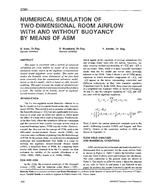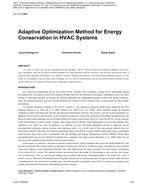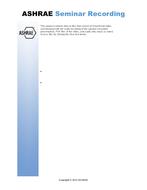Click here to purchase
Insulated ducts are extensively used for building air-conditioning applications. The insulation levels are designed based on energy loss considerations while the level of insulation required to prevent condensation on the duct surface from the air surrounding the duct is often not evaluated. In this paper, a coupled heat-mass transfer model has been developed to model the condensation-evaporation on vertical duct surfaces with for ducts within stud-bays (cavities) located adjacent to the conditioned building envelope. California Building Energy Code Compliance-Residential (CBECC-Res) building simulation tool was used to calculate the indoor space conditions for a single-family home located in sixteen different Climate Zones (CZ) of California. The simulations indicated that an increase in the area available for air infiltration in the cavity can increase condensation, however, the duration for which condensed water is present on the duct decreases. The quantity of water condensed on uninsulated ducts with low emissivity surfaces is much higher than that for high emissivity ducts (twice as high for reference CZ 13, Fresno). Furthermore, insulating the duct reduced condensation significantly and for CZ 13, R-1 insulation is sufficient to eliminate condensation completely. The worst-case scenario (low emissivity, uninsulated duct in a cavity with a large area for infiltration) was modeled for all climate zones. The climate zone with the highest level of condensation is CZ 9 (Burbank) i.e. 0.0081 lb. (0.037 kg), while the condensation was lowest for CZ 2 (Santa Rosa). Overall, the amount of water condensed, even in the worst-case scenario, is small compared to the moisture already present in the wooden studs surrounding the duct.
Product Details
- Published:
- 2022
- Number of Pages:
- 9
- Units of Measure:
- Dual
- File Size:
- 1 file , 1.8 MB
- Product Code(s):
- D-LV-22-C032
- Note:
- This product is unavailable in Russia, Belarus


